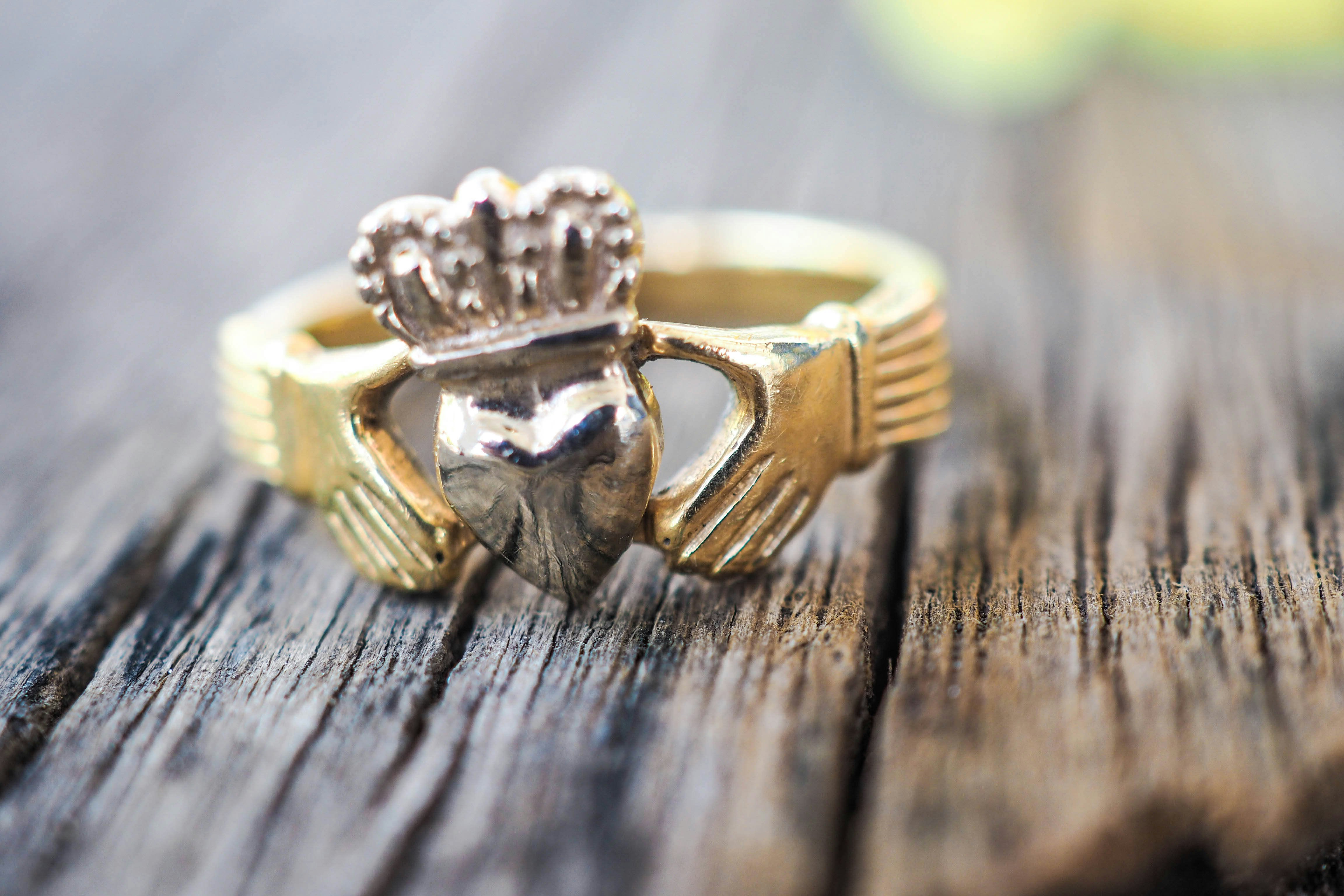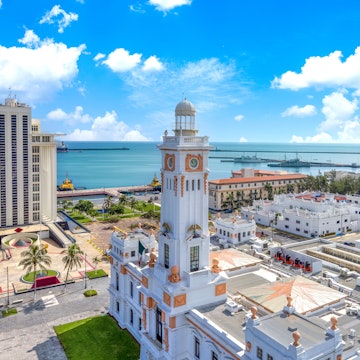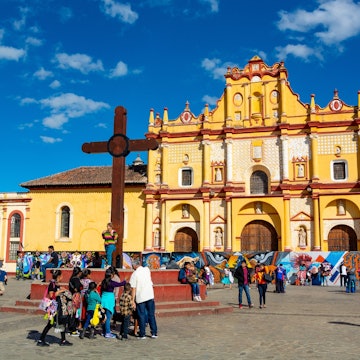

SarahB Photography/Getty
Jewellery has been a form of self-expression for centuries; women and men adorn themselves with necklaces, rings, bracelets, anklets, and dozens of other accessories to display their personal style, wealth, social status, and sentimentality.
If you look at the pieces you wear regularly, they likely come from a variety of places, maybe even purchased while travelling. Jewellery is a form of expressiveness that has so many regional interpretations; though we may wear them in similar places on our bodies, the sheer variety of global jewellery is astounding!
Although at the moment you can only shop for these pieces online (which is a fantastic way to support artisans), when travel restrictions are lifted, you can be more informed about jewellery traditions from around the world.
Kenyan craftsmanship is known for stunning handmade beads which for centuries were also used as currency. Many tribes in Kenya like the Samburu, Massai, and Rendille tribes are famed for their bead artisanship and when travelling the country you’ll be able to see distinct regional styles reflected in how they're produced.

More generally, jewellery in Africa can be traced back an estimated 75,000 years with the discovery of perforated snail shells in a South African cave that were likely strung together to form a necklace or bracelet. African jewellery both then and now is often produced from a colourful variety of materials readily available in the environment, creating beautiful, natural pieces.
Materials
Carved stone
Animal bones, teeth, hair, feathers
Husks, sea and land shells, egg shells
Wood
Amber
Glass
Porcupine quills
Seeds and nuts
Clay
Sandstone
Brass
Pieces
Beads – Kenyan bead jewellery can be worn in every way imaginable; as earrings, necklaces, bracelets, anklets, chains, headdresses, and even rings; beads can also be strung with with other materials (like shells, bones, etc.)
Piercings - popular styles include 'lobe gauging' pieces that stretch the earlobe.
Necklaces – the stunning beaded necklaces in Kenya are often worn in layers; the colours and patterns of the beads also signify different ideals like purity, hospitality, energy, etc.
Headdresses and headbands – historically, they were worn to signify special occasions, personal wealth, and societal roles. Brides in Kenya still wear beaded headdresses on their wedding.
Other uses – hair ornaments, clasps for clothing, and corsets.
Shop online: MAA Beadwork, Trinity Jewellery Crafts
Jewellery in China can be traced back 5000 years; the ancient tradition of burying the dead with their wealth has preserved many stunning pieces. Fashion has transformed throughout the centuries, but the materials and styles used then are still visible in 21st century interpretations. Silver and jade were the most popular materials, and China’s influence on East Asia made jade more precious than gold at one point.

Materials
Jade
Silver
Gold
Pearls
Clay
Glass
Stone
Pieces
Jade – jade indicated wealth and social status, but more importantly, it was a symbol of luck, blessings and wisdom. Jade jewellery comes in many forms; pendants, amulets, rings, earrings, etc.
Fengguan – the Chinese headdress was traditionally worn by noblewomen, but now is still worn by brides and can be made from feathers, beads, and precious gemstones .
Amulets –Chinese charms and coins can be purchased as many types of jewellery and carry lots of symbolism, acting as blessings or used in fortune telling.
Indian jewellery is ancient, colourful, and rich in symbolism. The materials and gemstones used are vast, owing to the huge variety of natural resources once available in India. Unfortunately many of the metals and gems that were once abundant have been plundered across centuries from various invaders, but jewellery is still an integral part of Indian culture. When in the markets, you’ll see dozens of shops; some villages even have bangle carts for a mobile shopping experience.

Materials
Yellow gold – this is often an indicator of wealth and luck
Silver
Metal
Gemstones – diamonds, emeralds, rubies, pearls, sapphires, cat’s eye, topaz, coral, and red zircon are the most popular gemstones in India, likely because of their spiritual significance (they represent the 9 Hindu deities)
Pearls
Pieces
Tikka – headpiece with a pendant that sits on the forehead and held in place with a hook attached to your hairline (Muslim brides often wear a variation called 'jhoomar' worn on the side of the head)
Mangalsutra – gold necklace with black beads worn by brides to ward off the 'evil eye' or 'nazar'
Kangan – very thick, usually metal bangles
Bangles – usually thin and worn in bunches made of metals, plastics, and glass
Payals – anklets made from precious metals that jingle
Jhumkas – earrings that are strung in the hairline
Nath – nose rings; brides often wear a large ornate loop nath for their weddings
Bajuband – metal armbands that often portray animals
Kamarbandh – a metal band worn around the waist
Shop online: Thank You India, Daughters of the Ganges, DiAi Designs
Irish jewellery and craftsmanship really flourished with the development of Celtic culture in the latter part of the Bronze Age. Traditional Irish jewellery is symbolic, and these symbols are often etched into gold and silver to represent the circle of life, unity and love.

Materials
Gold
Silver
Pieces
Celtic cross jewellery – dating as far back as the ninth century, the distinct Celtic cross can be purchased in many forms like necklaces, earrings, bracelets, and even on rosaries.
Claddagh rings – the famous ring was likely first produced in the 17th century – the hands represent friendship, the heart represents love, and the crown represents loyalty; they are often gifted by sweethearts.
Brooches – the famous Tara Brooch was found in 1850 but was likely made over 1000 years before that, today you can purchase imitations and interpretations.
Ogham jewellery – Ogham is Ireland's earliest known form of script, and today it is often found on jewellery.
Buy online: Dána Project, ThinkThreads
The history of Mexican jewellery goes back before European colonization. Indigenous jewellery had religious, astrological, social, and decorative meanings, symbols that are still crafted today, though most popularly in silver. Mexico is the second largest producer of silver in the world, and the sophistication and beauty of Mexican silver pieces are worth adding to any collection.

Materials
Silver
Gold
Turquoise
Amethyst
Black onyx
Red jasper
Emerald
Opal
Pieces
Body piercings – jewellery was used to pierce skin from Aztec times, though today the most common thing you can purchase are earrings and nose rings.
Silver jewellery – silver craftsmen take inspiration from both Mexico’s ancient tribal heritage and its colonial past; when walking around a market you can purchase nearly any kind of jewellery in silver.
Turquoise – turquoise jewellery has a rich history, used by Aztec Emperors to decorate themselves, their homes, and their temples; today turquoise is often incorporated with silver.
Shop online: Tuza
You might also like:
5 best cities for vintage shopping in the US
A guide to shopping in Istanbul
Traditional arts and crafts thriving around the world














